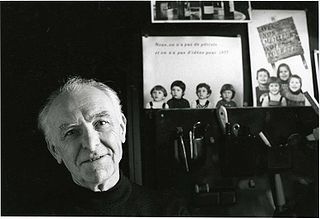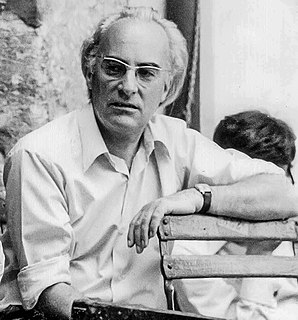Olivier Meyer | |
|---|---|
 Olivier Meyer by Alexandra Meyer in 2017 | |
| Born | August 22, 1957 |
| Occupation | Photographer |
Olivier Meyer is a French photographer born in 1957. He lives and works in Paris, France.
Olivier Meyer | |
|---|---|
 Olivier Meyer by Alexandra Meyer in 2017 | |
| Born | August 22, 1957 |
| Occupation | Photographer |
Olivier Meyer is a French photographer born in 1957. He lives and works in Paris, France.
His photo-journalism was first published in France-Soir Magazine [1] and subsequently in the daily France Soir in 1981. [2] Starting from 1989, a selection of his black and white photographs of Paris were produced as postcards [3] by Éditions Marion Valentine.
He often met the photographer Édouard Boubat on the île Saint-Louis in Paris and at the Publimod laboratory in the rue du Roi de Sicile. Having seen his photographs, Boubat told him: "at the end of the day, we are all doing the same thing...". [4] When featured in the magazine Le Monde 2 in 2007 [5] his work was noticed by gallery owner Charles Zalber [6] who exhibited his photographs at the gallery Photo4 managed by Victor Mendès.
His work is in the tradition of humanist photography [7] and Street photography using the same material as many of the forerunners of this style: Kodak Tri-X black and white film, silver bromide prints on baryta paper, Leica M3 or Leica M4 with a 50 or 90 mm lens. The thin black line surrounding the prints shows that the picture has not been cropped.
His inspiration came from Henri Cartier-Bresson, Édouard Boubat, Saul Leiter. [8] His portrait of Aguigui Mouna sticking his tongue out [9] like Albert Einstein, published in postcard form in 1988, [10] and subsequently as an illustration, in a book by Anne Gallois [11] served as a blueprint for a stencil work by the artist Jef Aérosol in 2006 [12] subsequently reproduced in the book VIP. [13] His photographs were exhibited at the Photo4 gallery in Paris in April 2008, and again in January 2010 [14] together with photographs by Ralph Gibson.
In September 2012, the Dupif gallery in Paris held an exclusive exhibition of his work [15] to mark the publication of the book Paris, Nothing new.

Henri Cartier-Bresson was a French humanist photographer considered a master of candid photography, and an early user of 35 mm film. He pioneered the genre of street photography, and viewed photography as capturing a decisive moment.

Édouard Boubat was a French photojournalist and art photographer.

Robert Doisneau was a French photographer. In the 1930s, he made photographs on the streets of Paris. He was a champion of humanist photography and with Henri Cartier-Bresson a pioneer of photojournalism.
Louis Stettner was an American photographer of the 20th century whose work included streetscapes, portraits and architectural images of New York and Paris. His work has been highly regarded because of its humanity and capturing the life and reality of the people and streets. Starting in 1947, Stettner photographed the changes in the people, culture, and architecture of both cities. He continued to photograph New York and Paris up until his death.

The Maison Européenne de la Photographie, located in the historic heart of Paris, is a major center for contemporary photographic art which opened in February 1996.
Born in Paris in 1971, Sophie Delaporte is a French photographer who lives between Paris and New York
Lucien Lorelle was a French portraitist, publicist, humanist photographer, author, painter, a member of Le Groupe des XV and founder of the photography company Central Color.
Réalités was a French monthly of the post World War II era which commenced publication in February 1946, flourishing during the Trente Glorieuses, a period of optimism, recovery and prosperity in France after the austerity of Occupation, ceasing in 1978 in France, although the later US edition continued until 1981. Its articles ranged across French culture, economy and politics, and featured profusely illustrated stories of interest to tourists, especially those traveling to French colonies.
Humanist Photography, also known as the School of Humanist Photography, manifests the Enlightenment philosophical system in social documentary practice based on a perception of social change. It emerged in the mid-twentieth-century and is associated most strongly with Europe, particularly France, where the upheavals of the two world wars originated, though it was a worldwide movement. It can be distinguished from photojournalism, with which it forms a sub-class of reportage, as it is concerned more broadly with everyday human experience, to witness mannerisms and customs, than with newsworthy events, though practitioners are conscious of conveying particular conditions and social trends, often, but not exclusively, concentrating on the underclasses or those disadvantaged by conflict, economic hardship or prejudice. Humanist photography "affirms the idea of a universal underlying human nature". Jean Claude Gautrand describes humanist photography as:
a lyrical trend, warm, fervent, and responsive to the sufferings of humanity [which] began to assert itself during the 1950s in Europe, particularly in France ... photographers dreamed of a world of mutual succour and compassion, encapsulated ideally in a solicitous vision.

Jean Dieuzaide was a French photographer.
Olivier Roller, is a French photographer based in Paris. Specialized in photographic portraits, he is creating, since 2009, a photographic fresco about figures of power, portraits of the "emperors of today", which he confronts to the faces of the past, from antiquity to Napoleon.
François Tuefferd was a French photographer, active from the 1930s to the 1950s. He also ran a darkroom and gallery in Paris, Le Chasseur d'Images, where he printed and exhibited the works of his contemporaries. His best-known imagery features the French circus.

Sabine Weiss is a Swiss-French photographer and one of the most prominent representatives of the French humanist photography movement, along with Robert Doisneau, Willy Ronis, Édouard Boubat and Izis. She was born in Saint-Gingolph, Switzerland, and became a naturalised French citizen in 1995.
Quentin Bajac is a French museum curator and art historian specialising in the history of photography. He is the director of the Galerie nationale du Jeu de Paume in Paris.
John Max was a Canadian photojournalist, photography teacher, and art photographer. He is recognized for his use of the narrative sequence, his expressive portraiture, and his intensely personal, subjective approach to photography.
Philippe Salaün was a French photographer.
Léon Herschtritt was a French humanist photographer. He won the Niépce Prize as a young photographer in 1960.

Les 30 × 40 or Le Club photographique de Paris was a photography club created in Paris in 1952 by Roger Doloy who was its president, with vice-president Jean-Claude Gautrand, photographer and author, and honorary president Jean-Pierre Sudre, professional photographer.
Jean-Claude Lemagny is a French library curator and historian of photography; a specialist in contemporary photography, he has contributed to the world of fine-art photography in several roles.
Boris Lipnitzki (1887–1971) was a Ukrainian-born French photographer of the arts; ballet, fashion, cinema, visual art, writing and music.
C'est le photographe Edouard Boubat, qu'il rencontre fréquemment sur les ponts de l'Ile Saint Louis à Paris qui lui dit un jour : "finalement, nous faisons tous la même chose"(The photographer Edouard Boubat, who he often met on the bridges of Saint-Louis Island in Paris, once told him: "at the end of the day, we are all doing the same thing")
Olivier Meyer, photographe humaniste dans la lignée des Doisneau et Ronis (Olivier Meyer, humanist photographer in the tradition of Doisneau and Ronis)
Inspired by the geometry of Henri Cartier-Bresson, by the humanism of Edouard Boubat (...) I am moved by the poetry of Saul Leiter, modern-day alchemist who transforms the ordinary into the extraordinary
Ce document "Aguigui tirant la langue à la façon du Dr Einstein et présentant dans la rue son journal le Mouna Frères" a fait l'objet d'une carte postale éditée en 1988 (This photograph of Aguigui sticking his tongue out like Einstein and displaying his journal Le Mouna Frères in the street was produced as a postcard in 1988)
Son travail s’inscrit dans la continuité de la street photography et de la photographie humaniste (His work is in the tradition of Street photography and Humanist photography)
Les sujets classifiés composent un puzzle de Paris intemporel, façon Georges Perec (The different themes make up a jigsaw showing timeless aspects of Paris, in the manner of Georges Perec)